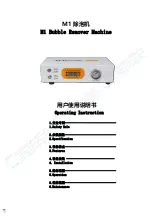
24
Safety precautions and warnings
Operator's Manual GB
3.3.1
3.3.1 Determination - Hoist
The TC hoists belong to the group of hoisting
winches. The use as determined is hoisting and
lowering of loads as specified for each hoist type
and under the attention of the given installation
regulations as well as of the safety notes.
Passenger transport with a.m. hoists is forbidden!
The use as determined also includes the related
equipment manufacturer’s recommendations re-
garding installation, operation and maintenance.
Machine safety is guaranteed only if it is used for
its intended purpose and according to instructions
in this manual.
3.3.2 Maximum load
Lifting capacity
Your crane has a certain lifting capacity, ex-
pressed in kNm or tm. This lifting capacity is
also known as the load moment. The lifting
capacity is: the payload at hook multiplied by the
outreach in metres that the crane can operate at
different positions. The lifting capacity of your
crane determines the maximum load your crane
may lift within its working zone. However take
careful note; the greater the operating radius of
the crane, the lower the lifting capacity will be
because of the weight of the boom system itself.
The load plate and the load diagram on your
crane show the maximum loads you may lift in
the operating reach of your crane.
DANGER
• Overloading could result in damage to the
crane or in the worst case, personal injury
or death
• Never increase a hanging load, since that
may cause a load holding valve to open
and/or the vehicle to turn over.
• Never use the crane with the OLP system
switched off.
! NOTE
















































